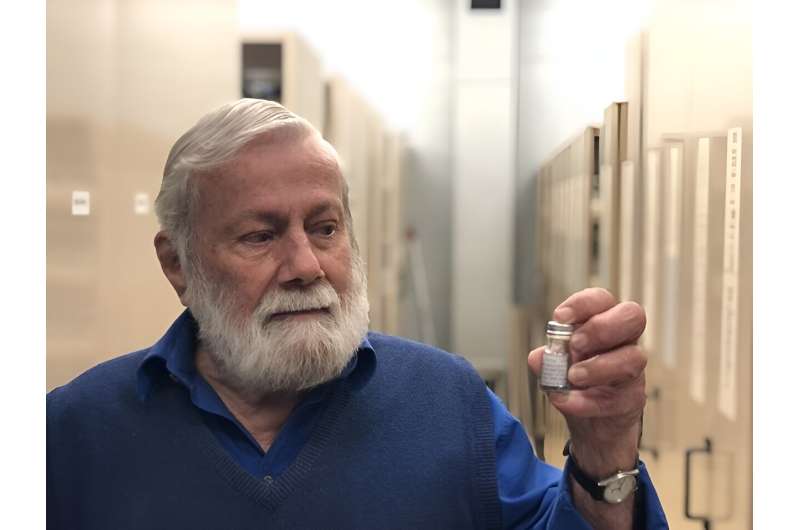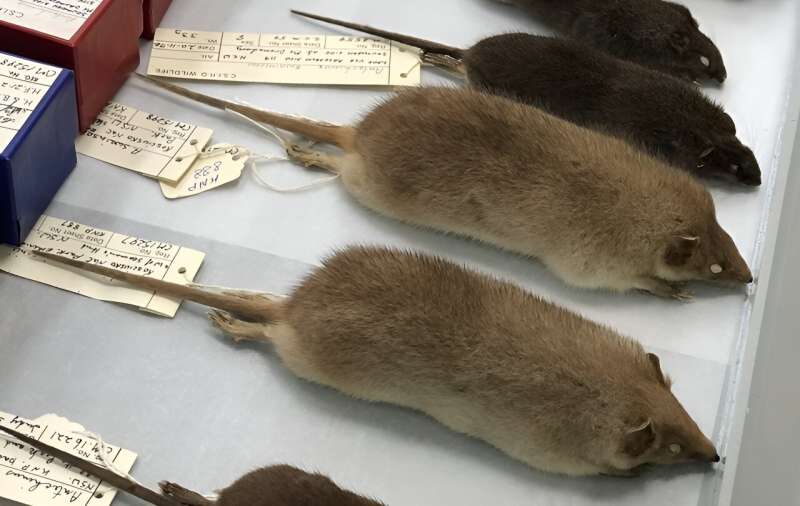This article has been reviewed according to Science X's editorial process and policies. Editors have highlighted the following attributes while ensuring the content's credibility:
fact-checked
trusted source
proofread
The secret life of brain worms

A neurosurgeon in Canberra removed a nematode that was living inside a person's brain in 2022.
With 50 years of experience, retired CSIRO parasitologist Dr. Dave Spratt was instantly able to identify the species of the worm, a diagnosis later confirmed by DNA work.
Worms for light years
Nematodes are so plentiful in nature that lined up nose to tail, they'd stretch light years across space, to Alpha Centauri and back.
Also known as roundworms, they are not related to earthworms. Some nematodes are microscopic, some are more than a meter long. Some are free-living, and some are parasitic, relying on plants, animals and other organisms.
Nematodes are found almost everywhere on Earth, from deep within gold mines, to inside the ears of reindeer. And the ones that live in animals can sometimes cause infections in humans.
Worm parasite of pythons
Dave spent his career at CSIRO working with parasites that infect Australian wildlife. He identified the nematode species removed from a person's brain as Ophidascaris robertsi (O. robertsi). It's a parasite of carpet pythons, but requires an intermediate host to complete its life cycle.
"Carpet pythons are the definitive hosts, where O. robertsi develops into its adult form. The adult worms live in the python's gastrointestinal tract and their eggs are shed in its feces," Dave said.
"Inside each egg, a larva develops to become a second stage larva, or L2. If the egg is then eaten by an intermediate host, such as a small marsupial, it triggers the larva to hatch. It then migrates to the animal's liver and grows into an L3 larva, around eight centimeters long.
"If a carpet python then catches and eats that animal, the L3 larva matures into an adult in the snake's gut and the life cycle begins again."
Worming into a human brain
Dave said O. robertsi is not fussy about its intermediate host. It can also infect accidental hosts, meaning animals that aren't the prey of pythons.

"This nematode has been recorded in many kinds of native and non-native mammals, including koalas and possums. An animal can be infected by dozens of larvae," Dave said.
"I've seen this parasite so many times in wildlife that as soon as the surgeon sent me a photo of the living worm, I knew from its bright red color what it was.
"But L3 larvae don't have many identifying features. So, after I had looked at it under a microscope, a couple of labs used DNA sequencing to make sure I'd got it right."
Dave said the case of O. robertsi in a person's brain is the first record of this species infecting a human as an accidental host.
"The eggs of this species are sticky. If pythons leave feces on vegetation, the eggs can then be eaten on plants or transferred from hand to mouth during foraging," he said.
"The L3 larvae normally stay in the liver but can wander through tissues and organs. This would be how it ended up reaching the person's brain."
Muscle-destroying worm
Part of Dave's legacy is the extensive collection of parasites held in our Australian National Wildlife Collection in Canberra. A fragment of the worm extracted from the person's brain has now been added to the collection.
Dave has encountered zoonotic infections many times during his career, but one that particularly concerns him is Haycocknema perplexum, the muscle-destroying nematode.
This nematode was named as a species by Dave, who chose the name perplexum because no one knows the details of its life cycle.
"Haycocknema perplexum is microscopic and lives inside muscle cells. The eggs hatch inside their mother and then develop in her to the third-stage infective larvae. They then burst from her head, creating a cascading infection of muscle cells that can be fatal," Dave said.
"We don't know how people or wildlife get infected with this nematode or whether it can survive outside its host in the environment."
Fewer than 10 infections of this nematode have been diagnosed in humans in Australia. It's thanks to Dave and a medical colleague that there is now a successful treatment for people with Haycocknema perplexum infections. The treatment used is sheep drench, which is normally used to treat roundworm infections in livestock.
Provided by CSIRO


















